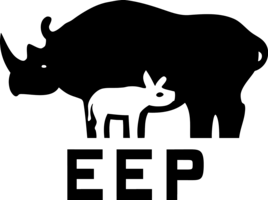South american sea lion
Otaria byronia

- FamilyEared Seals (Otariidae)
- Weight♀: 140 – 150 kg, ♂: 200 – 350 kg
- HabitatPacific and Atlantic coasts and beaches
Well insulated
South American sea lions have a thick layer of fat under the skin known as blubber. The 7 – 10 cm thick blubber provides good thermal insulation and adds buoyancy in the water. The sea lion also has a thick fur coat, which is covered in oil secreted from the skin. The oil waterproofs the fur and keeps the skin dry, even underwater.

Fin-footed
The Latin name for seals is Pinnipedia, which means fin-footed (from pinna “fin” and pes “foot”). The limbs of an eared seal resemble fins and allow it to propel itself in water as well as walk across land.
In Chile, vampire bats are known to use their sharp teeth to scrape the skin of South American sea lions and drink small amounts of their blood.
Distribution


Hellabrunn Zoo participates in the European Endangered Species Programmes

Hellabrunn participates in the European Studbook